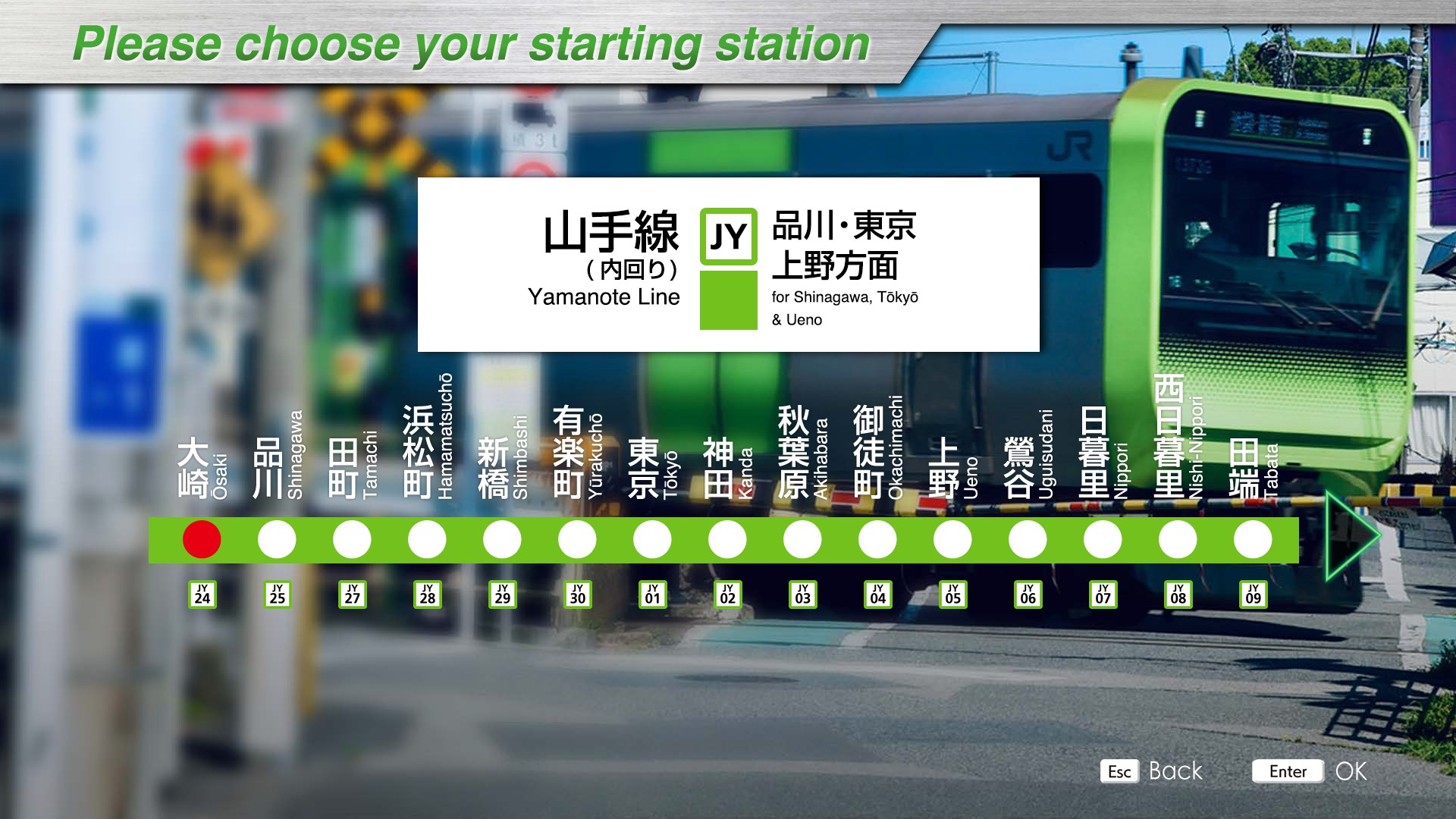Yamanote Line
Introducing
The Yamanote Line runs in a circle around the center of Tokyo for 34.5 km, taking 59 minutes, and is one of the major lines in the Tokyo metropolitan area, connecting huge terminal stations with world-class passengers. It runs parallel to the Keihin Tohoku Line between Shinagawa and Tabata stations, and the Saikyo Line and Shonan Shinjuku Line between Ikebukuro and Osaki stations.
Since most of the line runs parallel to other lines, many different types of rolling stock can be seen. The Yamanote Line has few level crossings, with only one crossing, the "Daini-Nakazato Level Crossing" between Tabata and Komagome Stations, the only crossing on the Yamanote Line.
The line is also characterized by its high frequency of service, with trains running every 3 to 4 minutes during the morning rush hour on weekdays, and every 5 minutes during the daytime on weekdays. Digital ATC is used as the security system.
Key data
- Line length: 34.5 km
- Number of stations: 29
- Safety system: D-ATC
- Train model: E235-0 series (11 cars)
- Max speed: 90 km/h
- Routes:
- Ōsaki~Ōsaki (1208G): Local train - 29 stations - 34.5 km
- Ōsaki~Ōsaki (876G): Local train - 29 stations - 34.5 km
- Automatic announcements: No
- Conductor announcements: Yes
- Driver announcement (pointing-and-calling): No
Features
The kanda station is the only one to have his station melody.
Since the safety system is the D-ATC, the warning lights must be ignored and the Max Speed / Next Limit indicators are empty.
TASC - Train Automatic Stopping Controller
As this line is equipped with landing doors, the margin of error for stopping is +/- 35cm, whatever the setting. However, as TASC data is available, it is possible to use TASC and the slow advance/inching function to make an automatic stop.
To do this, press "T" at the very beginning to activate TASC (deactivated by default). Then, when you arrive at the station, all you need to do is be at ~50km/h or less when you get within ~150m of the stop for TASC to activate and make the stop automatically.
If, for any reason, the train stops outside this limit, you can activate slow advance/inching using "I" key to advance/reverse at 2km/h max. to position yourself correctly. Once you're within the margin, TASC will take over to stop the train.
Stations list
| Station name |
Japanese name |
Distance | JRETS connections |
|---|---|---|---|
| Ōsaki | 大崎 | 0.0 |
JA Saikyō |
| Shinagawa | 品川 | 2.0 |
JT Tōkaidō |
| Tamachi | 田町 | 4.2 | |
| Hamamatsuchō | 浜松町 | 5.7 | |
| Shimbashi | 新橋 | 6.9 |
JT Tōkaidō |
| Yūrakuchō | 有楽町 | 8.0 | |
| Tokyo | 東京 | 8.8 |
JC Chūō (rapid) (last stop) JT Tōkaidō JU Utsunomiya (last stop) JO Sōbu (Rapid) JE Keiyō (last stop) JJ Jōban Tokaido Freight (last stop) |
| Kanda | 神田 | 10.1 |
JC Chūō (rapid) |
| Akihabara | 秋葉原 | 10.8 | |
| Okachimachi | 御徒町 | 11.8 | |
| Ueno | 上野 | 12.4 |
JJ Jōban JU Utsunomiya JU Takasaki |
| Uguisudani | 鶯谷 | 13.5 | |
| Nippori | 日暮里 | 14.6 |
JJ Jōban |
| Nishi-Nippori | 西日暮里 | 15.1 | |
| Tabata | 田端 | 15.9 | |
| Komagome | 駒込 | 17.5 | |
| Sugamo | 巣鴨 | 18.2 | |
| Ōtsuka | 大塚 | 19.3 | |
| Ikebukuro | 池袋 | 21.1 |
JA Saikyō |
| Mejiro | 目白 | 22.3 | |
| Takadanobaba | 高田馬場 | 23.2 | |
| Shin-Ōkubo | 新大久保 | 24.6 | |
| Shinjuku | 新宿 | 25.9 |
JC Chūō (rapid) JA Saikyō Tokaido Freight (last stop) |
| Yoyogi | 代々木 | 26.6 | |
| Harajuku | 原宿 | 28.1 | |
| Shibuya | 渋谷 | 29.3 |
JA Saikyō |
| Ebisu | 恵比寿 | 30.9 |
JA Saikyō |
| Meguro | 目黒 | 32.4 | |
| Gotanda | 五反田 | 33.6 | |
| Ōsaki | 大崎 | 34.5 |
JA Saikyō |
Movie
Useful links
Wikipedia: https://en.wikipedia.org/wiki/Yamanote_Line
Driver's guide and timetables: https://docs.google.com/spreadsheets/d/11EzIt2dOjwZ_V4Ec4HMRwgWNXQFLfG9sTFj_pgl0Dko/edit#gid=119399473

